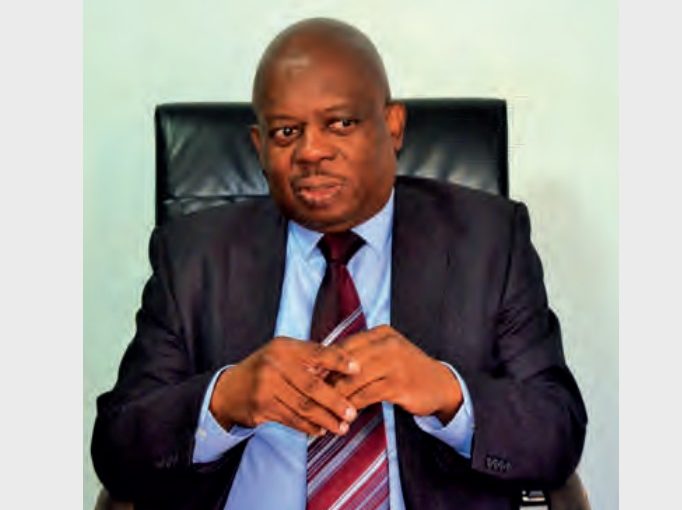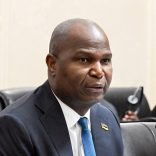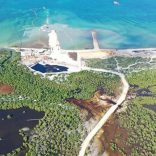Mozambique: Mozal must pay “fair price” for electricity - AIM report | Watch
Investments in electricity, roads and railways vital to process mineral resources in Mozambique

Photo: Domingo
The executive director of the Chamber of Mines of Mozambique (CMM), Eugénio Silva, suggests that, to secure the development of the mining sector, the government should continue to mobilise investment for the construction of energy generation and transport infrastructure and access to production sites.
These investments would stimulate companies and other users to leverage local economic growth.
“Once the infrastructure is in place, it will generate business opportunities for the private sector at different levels, including in the family sector,” he stressed in an interview with ‘Domingo’.
He cites as one example the recent construction of the Maputo Ring Road, which boosted the development of almost the entire area crossed by the highway. “These investments must be made by the state. Private companies may help make them viable and one of the ways to do that is for companies to pay for the use [of infrastructure]”.
Another additional solution for the development of infrastructure would be the electrification of the country’s railway network, as this could replace a huge amount of diesel used in this sector.
“Importing diesel to power locomotives not only requires the continuous disbursement of large sums in foreign exchange, but also represents a major logistical challenge and exposes industries and the country to the volatility of international market prices, as is now seen with the Russia -Ukraine war,” he observed.
In his opinion, the use of electric traction in the rail system would secure all the advantages mentioned, as well as actually expanding the energy transmission and distribution network, a critical factor for economic and social development.
“We would start with the new railway projects, such as the Macuse Logistics Corridor, which the existing lines could then follow,” he suggested.
These concerns had been raised by Eugénio Silva, who said that, despite the country having immense potential in mining, difficulties in its full exploitation persist due to the lack of access roads and, above all, of electrical energy of sufficient quality for processing.
For this speaker, electrical energy is one of the most important factors in the dynamization of the mining industry – witness the number of exploitation operations currently constrained by lack of electricity.
“Investing in electricity is extremely expensive. Mozambique has enormous potential for the production of renewable and traditional energies, but to translate this potential into real investment aimed at production, transport and transmission is a complicated process,” Silva acknowledged.
He recalled that large operations are hampered, regarding their scale, by the lack of sufficient and viable energy and infrastructure, which, in turn, conditions the processing of the mineral resources.
“We want to see mineral resources processed locally to add value and create jobs, but often this additional step represents a huge energy challenge,” he said.
Risk activity
Eugénio Silva explained that mining involves different risks. One of these is financial risk, because there is a lot of work between the identification of potential and the determination of actual reserves, with no guarantee that deposits will actually be found. “During this process, it is not certain whether or not finds have economic value and can generate profits,” he mentions.
After that, depending on the type of deposit, the form of exploitation, methods and equipment used, danger lurks – for both open pit and underground mines. “It is necessary to take into account that disasters happen in both large-scale and small-scale mining,” he underlined.
The risks are increased In the case of artisanal mining, the source highlighted, because wells and galleries are often out in the open, which endangers the lives of those living nearby. Excavations can be more than 20 metres deep, with no signage indicating their existence.
“Often excavations are done on a horizontal axis, which adds to the risk of collapsing,” Silva notes.
Operators are, however, often aware of how to mitigate risks, protect vertical wells and create safer conditions for their work.
Overlapping rights
Lack of institutional coordination means that, in industrial exploitation, there is often an overlap between Right to Use (DUAT) rights and mining licenses. This is normal, but not desirable, Silva says.
“It is normal because we are talking about two types of DUAT. In these cases, what the law determines is that this must be resolved between the two holders,” he argues.
The fact is that mining title covers many forms of exploitation, which may include the soil or the subsoil only, but even when restricted to the subsoil, ends up affecting the soil because the operator will always need space and resources on the surface.
But what, in Eugénio Silva’s opinion, should never occur is any overlap between mining licences, mainly because the regulator has a department which deals exclusively with the delimitation and exact contours of each licence area.
This computer tool is based on the geographic system with the necessary precision to delimit each area so that there is no overlap.











Leave a Reply
Be the First to Comment!
You must be logged in to post a comment.
You must be logged in to post a comment.